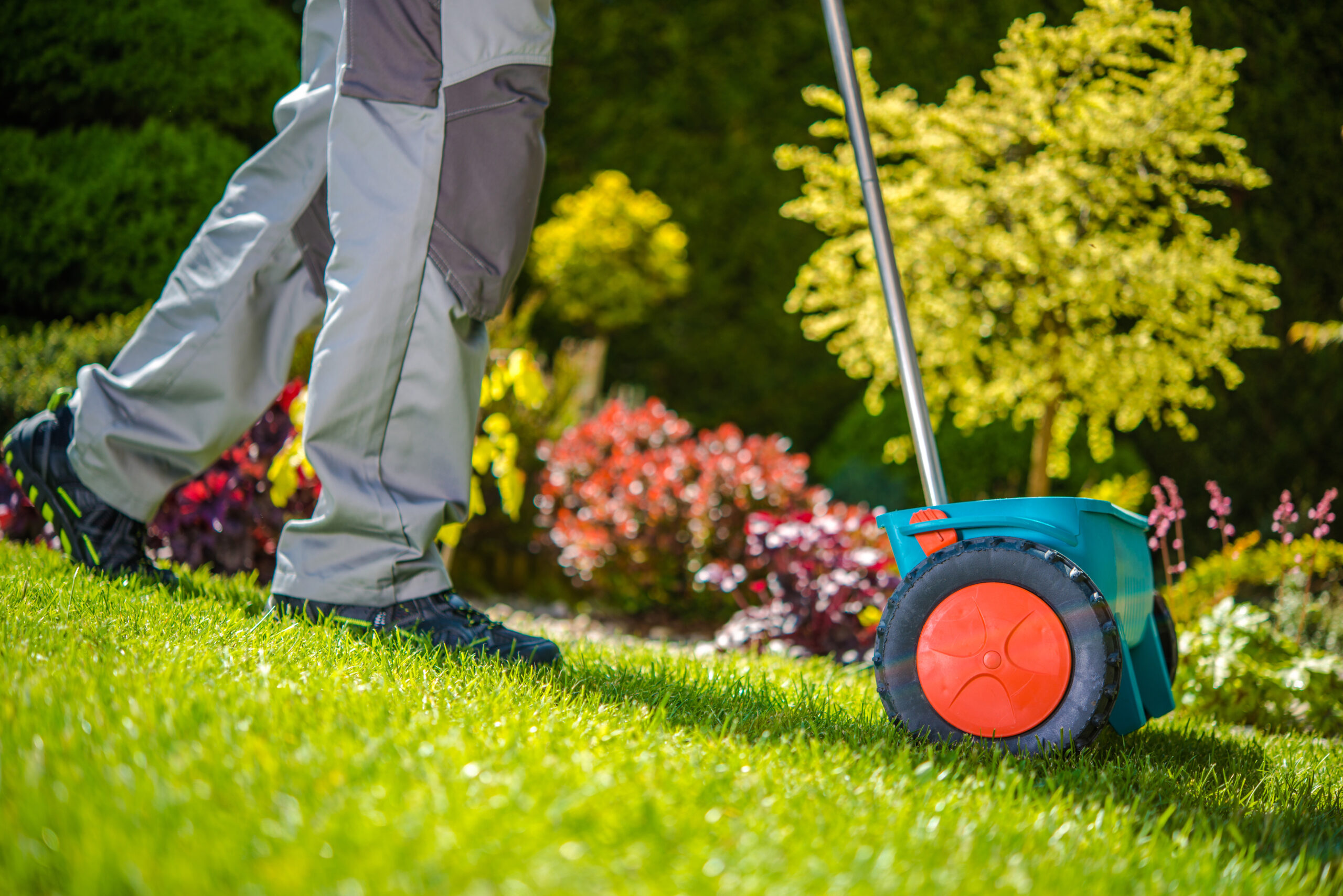
As the days of summer begin to fade, our focus shifts from barbecues and vacations to preparing for the cooler months ahead. An essential task for the fall is ensuring our lawns have what they need to be able to thrive until next summer. One key aspect of fall lawn care that can significantly impact the health and appearance of your lawn is overseeding. This process not only helps to repair damaged areas but also thickens your lawn, making it more resilient to weeds, diseases and harsh weather conditions.
Why Overseeding Matters
Overseeding is the practice of planting grass seed directly into existing turf without tearing up the soil or the turf. This technique is vital for maintaining a lush, healthy lawn for several reasons:
- Fills in Bare Spots: Over time, patches in your lawn can develop due to high foot traffic, pests, or disease. Overseeding helps fill these bare spots, ensuring a uniform appearance.
- Improves Lawn Density: Thicker lawns are better at crowding out weeds, reducing the need for chemical herbicides. A dense lawn also enhances the overall aesthetic of your yard.
- Enhances Grass Variety: Introducing new grass varieties through overseeding can make your lawn more resistant to diseases, pests and environmental stressors. This diversity ensures that if one type of grass struggles, others can take over.
- Increases Tolerance to Stress: A well-overseeded lawn can withstand the stress of extreme weather conditions, such as drought or heavy rains, more effectively than a lawn with thin or patchy grass.
Steps to Effective Overseeding
To achieve the best results from overseeding, it’s important to follow a few key steps:
- Choose the Right Time: Fall is the ideal time for overseeding because the soil is still warm, which promotes seed germination. Cooler air temperatures also reduce stress on new seedlings. Aim to overseed at least 45 days before the first expected frost. (Farmer’s Almanac Frost Estimator)
- Prepare Your Lawn: Begin by mowing your lawn shorter than usual, but be careful not to scalp it. This allows the seeds to make better contact with the soil. Ideally, do this before an expected rain. After mowing, rake your lawn to remove debris and thatch, which can hinder seed-to-soil contact.
- Aerate the Soil: Aeration involves perforating the soil with small holes to allow air, water, and nutrients to penetrate the grass roots. This process helps to alleviate soil compaction and creates an optimal environment for seed germination.
- Select the Right Seed: Choose a high-quality grass seed that is suitable for your region and existing lawn. Look for a seed mix that includes varieties known for their resilience and adaptability. Missouri Southern Seed has many blends to choose from.
- Spread the Seed: Use a broadcast spreader to evenly distribute the grass seed over your lawn. Be sure to follow the recommended seeding rates on the seed packaging.
- Fertilize: Apply a starter fertilizer that is high in phosphorus to support root development. This step is crucial for the establishment of new grass seedlings.
- Water Regularly: Keep the soil consistently moist until the new grass reaches about two inches in height. Water lightly and frequently to ensure that the seeds do not dry out.
- Monitor and Maintain: Once the new grass is established, gradually reduce the frequency of watering but increase the amount. Continue to mow and fertilize your lawn as needed, and be vigilant for any signs of pests or disease.
Fall overseeding is a simple yet effective way to encourage a lush lawn as well as strengthen it for the upcoming winter. With a little dedication to proper lawn care and the right seed, you can enjoy a thriving lawn that enhances the beauty of your home.
Not sure what to plant? The team at Missouri Southern Seed is more than happy to help you find what will work best for your lawn conditions. So, as fall approaches, make overseeding a priority in your lawn care routine. Your yard will thank you for it!
